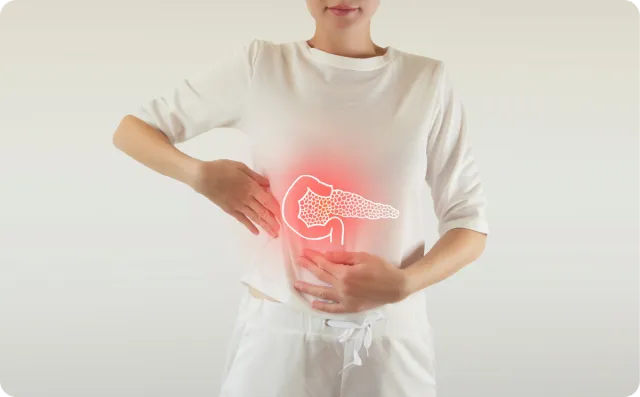
Jump to
Book a visit
$25 typical copay
$100 without insurance
Get constipation relief today from the comfort of your own home.
A virtual constipation treatment consultation makes it easy to talk to a doctor about your symptoms and get a personalized treatment plan, fast and discreetly.
Key takeaways:
- The Bristol Stool Chart can help you learn what your bowel movements say about your health.
- Different stool types on the chart provide clues about hydration, diet, and even stress levels.
- Knowing what’s normal for you and when to contact a doctor is key to maintaining good digestive health.
You might not think about your bowel movements very often, but they can be a good indicator of how your digestive system is doing. Our body has a way of giving us clues about what’s going on inside, and the Bristol Stool Chart was created to help people and doctors better understand what different types of stools can reveal about a person’s health. Each type can give hints about things like hydration, diet, and stress levels.
In this guide, we’ll explore the basics of the chart, the seven different types of stools, and what each type might mean for your health. We’ll also look at signs of a healthy bowel movement for both adults and children, so you can know what’s normal and when you might want to reach out to a doctor.
What is the Bristol stool chart?
The Bristol Stool Chart is a medical tool that breaks down different stool shapes and textures into seven types. Each type has its own characteristics and clues about what may be happening in your digestive system. Think of it as a quick way to check in on your gut health. It was created in the 1990s by researchers at the University of Bristol and meant to give doctors and patients a simple way to talk about bowel movements without getting too embarrassed or confused.
Each type offers insights into your hydration levels, diet, and digestive wellness, from hard, lump stools to loose, watery ones. Sometimes, the chart can hint at larger issues, like if you need more fiber or if your body is responding to stress. While it’s not a substitute for professional advice, it’s a helpful guide for noticing patterns and making simple changes to your routine.
How to use the Bristol stool chart
Using the Bristol Stool Chart is pretty straightforward. After a bowel movement, take a moment to compare what you see with the descriptions on the chart. You don’t need to do this every time—just often enough to get a sense of what’s typical for you. Most people tend to see the same types repeatedly, which means you might not need to worry if things look a little different occasionally.
The idea here is to look for patterns. For example, if you notice a lot of types 1 and 2, it could mean you’re not drinking enough water or getting enough fiber. On the other hand, if you’re mostly seeing types 6 or 7, you may look at your diet or consider if stress is playing a role. Generally, types 3 and 4 are considered ideal for healthy digestion, but any consistent changes should be monitored, especially if they’re accompanied by pain or discomfort.
Overview of stool types from the Bristol stool chart for adults
The Bristol Stool Chart identifies seven types of stools, each giving insight into digestion and overall health. Understanding these types can help you notice patterns and changes in your body.
Type 1
Type 1 stools appear as separate hard lumps, almost like little nuts or pebbles, which can be uncomfortable to pass. This type often indicates constipation and usually suggests dehydration or a low-fiber diet.
If you see this type regularly, it’s worth considering if you drink enough water and eat fiber-rich foods like fruits, vegetables, and whole grains. Staying hydrated helps soften stool, making it easier to pass. At the same time, fiber adds bulk, which can help your digestive system stay on track.
Type 2
Type 2 stools look lumpy and sausage-like, with a more solid and chunky appearance than Type 1.
This is another sign of mild constipation, often related to a lack of fiber or water. It may also occur when stool moves too slowly through the intestines, giving the body more time to absorb water and making the stool harder. To ease this, try gradually increasing your fiber intake and ensuring you stay well-hydrated throughout the day.
Type 3
Type 3 stools have a sausage shape with some cracks on the surface. It’s generally healthy, though the cracks suggest you might benefit from more fiber in your diet.
Type 3 is considered a sign that things are going fairly well, but there’s room for minor improvements. If you want to encourage smoother, easier movements, try adding a few more fiber-rich foods or a bit more water to your routine.
Type 4
A smooth, soft stool shaped like a sausage or snake falls under Type 4. This is considered ideal, often indicating good digestive health and a balanced diet.
When your stool is this type, it generally means you’re getting enough water and fiber and your digestive system is working efficiently. Type 4 is the goal for most people, as it’s easy to pass without being too loose or firm.
Type 5
Type 5 stools appear as soft blobs with clear-cut edges. While not necessarily problematic, this type can mean you’re consuming too much fiber or experiencing mild digestive irritation. It might also suggest that your body is moving food through the digestive tract a little faster than usual.
If you see Type 5 frequently, consider balancing your fiber intake or keeping an eye on foods that might be causing minor irritation.
Type 6
This type looks fluffy with ragged edges and has a mushy texture. It often suggests mild diarrhea, possibly due to stress, dietary changes, or a mild infection. Type 6 stools indicate that your digestive system is working a bit too quickly, which means your body isn’t absorbing as much water as it should.
While occasional Type 6 stools aren’t concerning, consistent patterns could mean you need to identify potential triggers in your day-to-day life, like specific foods or stressors.
Type 7
Type 7 stools are watery with no solid pieces. This is a sign of diarrhea, often resulting from infection, food sensitivity, or a more serious digestive issue. Unlike other types, Type 7 stools mean food moves very quickly through the digestive tract, leaving little time for water absorption.
If this type persists, consult a healthcare provider, as ongoing diarrhea can lead to dehydration and other complications.
Signs of a healthy bowel movement in adults
Healthy bowel movements have specific qualities that show your digestive system is working well. Knowing what to look for can help you understand your body’s needs.
Consistent shape and texture
A healthy bowel movement generally has a sausage-like shape and smooth or slightly cracked edges. This usually indicates that the digestive system is functioning well and that there’s a good balance of water and fiber.
Easy to pass
Healthy stools should come out easily without too much strain, and you shouldn’t feel like you’re “not done” afterward. If your bowel movements require a lot of effort, it might be a sign of dehydration or a need for more fiber.
Regular frequency
Everyone’s “regular” is different, but most people have a bowel movement once a day or every couple of days. Consistency in your personal routine is more important than following a strict schedule.
Overview of stool types from the Bristol stool chart for children
For children, stool types can reflect their diet, hydration, and even stress levels. Learning what’s normal for kids can be helpful for parents in managing their health.
Type 1
This type appears as separate hard lumps, almost like little pebbles, which can be uncomfortable to pass. It usually means constipation and suggests dehydration or a low-fiber diet.
Type 2
Type 2 stools look lumpy and sausage-like. This is another sign of constipation, possibly from a low-fiber diet or holding stool for too long.
Type 3
This type has a sausage shape with some cracks on the surface. It’s generally healthy, though it might mean the child needs more fiber.
Type 4
A smooth, soft stool shaped like a sausage or snake falls under Type 4. This is ideal and usually indicates good hydration and a balanced diet.
Type 5
Type 5 stools appear as soft blobs with clear-cut edges. This may indicate mild irritation or too much fiber in the child’s diet.
Type 6
This type looks fluffy with ragged edges and has a mushy texture. It’s often a sign of mild digestive issues or anxiety.
Type 7
Type 7 stools are watery and lack any solid pieces. This is a sign of diarrhea, possibly due to infection or sensitivity to certain foods. In children, prompt medical attention for diarrhea is especially important to avoid severe dehydration.
Signs of a healthy bowel movement in children
Children’s bowel movements can vary, but there are a few signs of healthy digestion to watch for. These signs help ensure kids are getting the right nutrition and hydration.
Soft and easy to pass
A healthy stool for children should be soft, formed, and pass without discomfort. If it’s too hard or too loose regularly, look into your diet or hydration.
Consistent patterns
Children may not go as often as adults, but a predictable routine, even every few days, is generally a good sign. Noticeable changes in frequency or consistency can indicate stress, dehydration, or dietary needs.
Normal color
Healthy stool color can vary but typically ranges from brown to a dark yellow. Certain foods, like beets or food coloring, can temporarily affect color.
When to see a doctor about your bowel movements
It’s time to check with a doctor if you notice persistent changes in stool type, color, or frequency. Any sudden diarrhea, blood in the stool, or severe constipation lasting more than a few days should be addressed.
You should see a doctor if:
- Bowel movements have been irregular for more than a few days.
- There’s ongoing bloating or mild discomfort.
- You notice a small amount of blood.
You should go to the emergency room if:
- There's a moderate amount of blood in your stool.
- You have severe abdominal pain or notice signs of severe dehydration (dizziness, confusion, rapid heartbeat).
- You experience a high fever along with diarrhea.
Questions to ask your doctor about bowel movements
If you’re experiencing unusual digestive symptoms, a few simple questions can help you get answers from your doctor. Knowing what to ask makes it easier to improve your health.
- What can I do to improve my digestion and prevent constipation?
- How can I tell if my bowel habits are “normal” for me?
- What dietary changes might help my stool consistency?
- Could stress or medications be impacting my digestion?
Frequently asked questions: Bristol stool chart
Many people have common questions about what’s normal and what’s not on the Bristol Stool Chart. Here’s a look at some of the most asked questions to help you understand your digestive health.
What type of stool is concerning?
Stools that are consistently Type 1, Type 6, or Type 7 could mean dehydration, constipation, or digestive issues, and it’s worth looking into them.
What number should you be on the Bristol stool chart?
Generally, Types 3 and 4 are the healthiest stool types, showing balanced hydration and fiber in your diet.
Understanding bowel movements
Keeping an eye on your stool type might seem odd, but it’s an easy way to check in on your health. Use the Bristol Stool Chart as a guide, and don’t hesitate to talk to a healthcare provider if you notice changes that concern you.
General Medicine follows a strict editorial process, including using real experts to write our articles, vetted primary sources, fact-checking, a secondary medical review, and updates as necessary. This article was medically reviewed and fact checked by Dr. Pallabi Sanyal-Dey, MD.
Sources
Chumpitazi BP, Self MM, Czyzewski DI, Cejka S, Swank PR, Shulman RJ. Bristol Stool Form Scale reliability and agreement decreases when determining Rome III stool form designations. Neurogastroenterol Motil. 2016 Mar;28(3):443-8. doi: 10.1111/nmo.12738. Epub 2015 Dec 21. PMID: 26690980; PMCID: PMC4760857. https://onlinelibrary.wiley.com/doi/10.1111/nmo.12738
"Why Does Pooping Feel Good?" Medical News Today, 14 Dec. 2022, www.medicalnewstoday.com/articles/why-does-pooping-feel-good.
Bristol Stool Chart. Bladder & Bowel Community, Jan. 2016, www.bladderandbowel.org/wp-content/uploads/2017/05/BBC002_Bristol-Stool-Chart-Jan-2016.pdf
Manual for the Health Care of Children in Humanitarian Emergencies. Geneva: World Health Organization; 2008. 3, Diarrhoea and dehydration. Available from: https://www.ncbi.nlm.nih.gov/books/NBK143745/
Anti M, Pignataro G, Armuzzi A, Valenti A, Iascone E, Marmo R, Lamazza A, Pretaroli AR, Pace V, Leo P, Castelli A, Gasbarrini G. Water supplementation enhances the effect of high-fiber diet on stool frequency and laxative consumption in adult patients with functional constipation. Hepatogastroenterology. 1998 May-Jun;45(21):727-32. PMID: 9684123. https://pubmed.ncbi.nlm.nih.gov/9684123/
Borkoles E, Krastins D, van der Pols JC, Sims P, Polman R. Short-Term Effect of Additional Daily Dietary Fibre Intake on Appetite, Satiety, Gastrointestinal Comfort, Acceptability, and Feasibility. Nutrients. 2022 Oct 10;14(19):4214. doi: 10.3390/nu14194214. PMID: 36235865; PMCID: PMC9572413. https://pmc.ncbi.nlm.nih.gov/articles/PMC9572413/pdf/nutrients-14-04214.pdf.
Our editorial standards
At General Medicine, we cut through the clutter to make health care clearer, faster, and easier to navigate. Every article is grounded in evidence-based research and peer-reviewed journals, reviewed by medical professionals, and written in accessible language that helps you make health decisions with confidence. We’re committed to ensuring the quality and trustworthiness of our content and editorial process by providing information that is up-to-date, accurate, and actually useful. For more details on our editorial process, see here.



